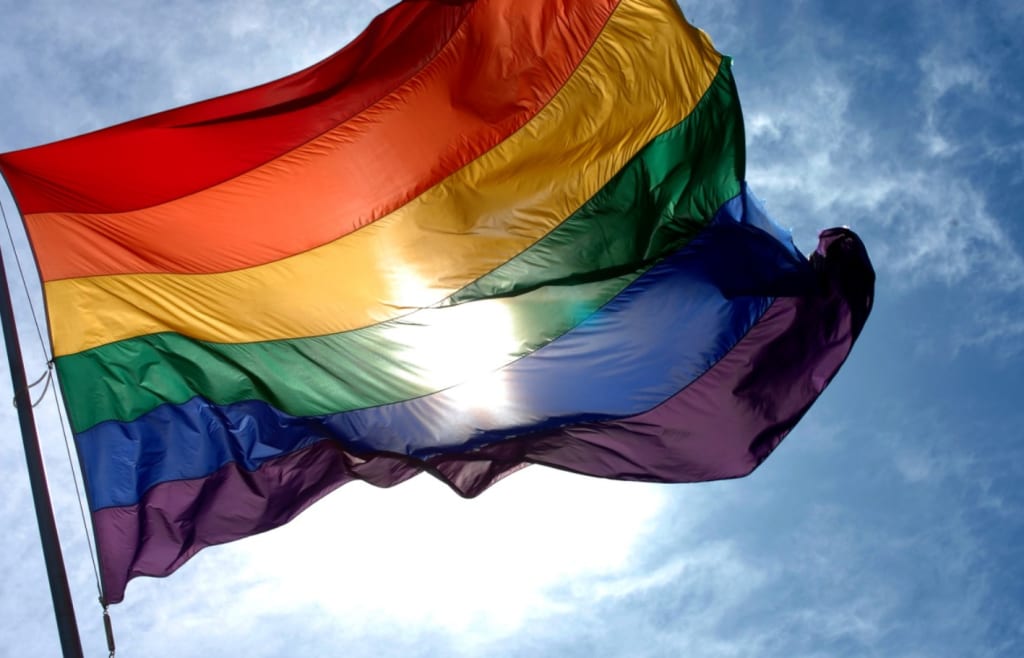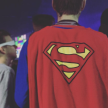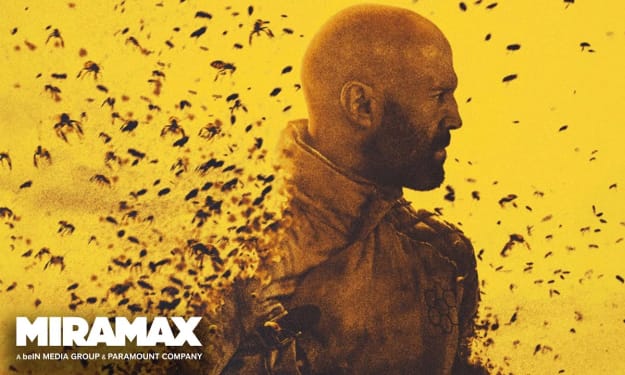
From mainstream novels that star gay characters (such as Simon and the Homosapien Agenda) to novels that only have queer side characters (This Is Where It Ends, anyone?), the literary world is bursting with accurate portrayals of the queer community.
However...the LGBTQIA+ community has only become to be popularized and accepted in this century. Is there any queer representation in classics?
You'd be surprised to find that there are several characters who are less straight than we thought...
#8: Gene and Finny in 'A Separate Peace'
“Phineas was shocked at the idea of my leaving. In some way he needed me. He needed me … He wanted me around.”
This classic shows how complicated a relationship between two boys can be. Throughout the entirety of the book, we see their relationship fluctuate over the time they have together, constantly changing from adversaries to close friends to something in between.
Although it's not directly stated that Gene and Finny are in a romantic relationship, it's a conclusion that certainly has a foundation. After all, if there's one thing that all of us get confused over (especially as teenagers), it's sorting out feelings and giving them names.
#7: Albus Dumbledore in the Harry Potter Series
"After reading an excerpt from the seventh installment of her series, 'Harry Potter and the Deathly Hallows,' one young fan asked if Dumbledore had ever loved anyone.
'Dumbledore is gay, actually,' replied Rowling."
(From "Rowling Lets Dumbledore Out of the Closet")
Yes, yes, it's too early to say that Harry Potter will be remembered as a literary masterpiece, but it's safe to say that it's already made a positive impact on a few generations.
Dumbledore's sexuality may have been made queer-cut (ah, bad puns) through JKR's tweets, but it's not as obvious in the book. Some say it's an excuse for JKR to throw in some representation for the audience. Others claim that her statement isn't canon.
However, Dumbledore's journey of sexuality does make sense. JKR went on to elaborate that Dumbledore and Grendelwald had a thing—or, at the very least, that Dumbledore had a crush on said dark wizard.
So, will we get to see Dumbledore's queer side in the upcoming movie(s)? Word says that it's not in the movie coming out, but we can all cross our fingers that, at the very least, they'll drop hints later on.
#6: Nick Carraway from 'The Great Gatsby'
‘”Come to lunch some day,” he suggested, as we groaned down in the elevator.
“Where?”
“Anywhere.”
“Keep your hands off the lever,” snapped the elevator boy.
“I beg your pardon,” said Mr. McKee with dignity, “I didn’t know I was touching it.”
“All right,” I agreed, “I’ll be glad to.”
One of the most popular theories revolving around Fitzgerald's The Great Gatsby is Nick Carraway's plausible bisexuality. He shows interest in women (Jordan Baker, anyone?), but there is textual evidence that hints that Carraway swings both ways.
For instance, Carraway's character as a narrator shows that he's observant but mostly detached from the world he lives in. However, he takes a different angle when describing Gatsby, using vivid language that makes us feel as drawn to the man as Carraway is.
And then, of course, there's Carraway's encounter with Mr. McKee in the lever scene. Fitzgerald masterfully uses subtext to show us what's happening rather than stating the obvious out loud. After all, Carraway isn't unnerved by the fact that he's alone with an almost-naked man, but seems to welcome the sight. I wonder why...
#5: Carmilla and Laura from 'Carmilla'
How beautiful she looked in the moonlight! Shy and strange was the look with which she quickly hid her face in my neck and hair, with tumultuous sighs, that seemed almost to sob, and pressed in mine a hand that trembled.
Her soft cheek was glowing against mine. "Darling, darling," she murmured, "I live in you; and you would die for me, I love you so."
Not only does Le Fanu's novel hold the title of being one of the first vampire classics (published decades before Stoker's revered Dracula), it's also one of the few classics that star a canon lesbian couple.
Throughout the novel, the protagonist Laura deals with internal and external struggles revolving around sexuality, social norms, and (of course) the supernatural.
#4: Achilles and Patroclus in the 'Iliad' and the 'Oresteia'
Madeline Miller's take on these star-crossed lovers in Song of Achilles isn't built on gay fan-fiction, but is actually taken from the canon couple in several Greek plays.
For this couple, let's rewind back to the Grecian times. Unlike most modern day countries, the Greeks condoned same-sex relationships. And thus, the stories of Achilles and Patroclus were born.
In Aeschylus's trilogy Oresteia, the relationship between the two warriors is explicitly stated. However, the Iliad shows without telling, heavily implying that Achilles and Patroclus are lovers.
I mean, (*spoilers*) Patroclus goes into battle pretending to be his lover, dies, and then Achilles (tries to) avenge(s) him in a grief-induced rage. How gayer can you get than that?
(And, I mean, of course their story's gay and tragic. Most accounts of Achilles and Patroclus are written by the Greek father of tragedy; what else could we expect?)
#3: Ruth and Idgie in 'Fried Green Tomatoes at the Whistle Stop Cafe'
“Idgie smiled back at her and looked up into the clear blue sky that reflected in her eyes and she was as happy as anybody who is in love in the summertime can be.”
The first argument against this implied WOC couple's relationship is that the two were never out to the audience. However, the story takes place during the early-to-mid-1900s. Lesbians and other people in the queer community were ostracized—it wouldn't have made sense if Ruth and Idgie were publicly out.
Yet, the two clearly have an unstated chemistry between each other. Not only is it heavily hinted that Ruth and Idgie were a couple (how many times do I have to mention subtext, folks?), but they were devoted to each other in a sexist and racist reality.
#2: Holden Caulfield, from 'Catcher in the Rye'
"You know what the trouble with me is? I can never get really sexy—I mean really sexy—with a girl I don't like a lot. I mean I have to like her a lot. If I don't, I sort of lose my goddamn desire for her and all. Boy, it really screws up my sex life for something awful. My sex life stinks."
Almost everyone can agree that Holden Caulfield's not the most pleasant narrator to be around. After all, most of his internal monologue is spent lamenting about repressed pain and the monotony of life. But, it's an undeniable fact that J. D. Salinger's narrator—as unreliable as he seems/is—does an excellent job at detailing his internal thoughts while unraveling the questions he wrestles with.
Holden can come across as either an demisexual gay character. That's right, folks: we might have landed ourselves a jackpot when we found a possible demi-protagonist in Holden.
But, how? Why?
Thoughout the entire book, we readers are constantly intruding on Holden's thoughts. But, as usual, all of our proofs are found in subtext.
For instance, take Holden's lack of sexual drive with people he doesn't feel an emotional connection to. He pays a prostitute not to have sex with him, his views on sexual attraction towards anyone lack genuine want, and despite being in a sex-driven world he searches for meaning in other venues.
Holden Caulfield = asexual? The only correct answer to this question is Yes!
#1: Celie and Shug Avery in 'The Color Purple'
“Who am I to tell her who to love? My job just to love her good and true myself."
To end this with a bang, we're going to visit a POC lesbian couple from the post-American Civil War period. That's right: it's Celie and Shug Avery, taking the spotlight as they should.
This canon black couple kicks ass as they face down sexism, racism, and homophobia. But despite everything, what they teach each other helps them find inner satisfaction with themselves and the world around them.
Honestly, Celie and Shug Avery deserve a medal for showing us what mutual support looks like in a romantic relationship.
In conclusion?
I'm going to be honest with you: not everything in this world is meant to be queer. But, that doesn't mean queer characters don't exist. Authors from all periods used their skills to ask questions, make statements, and question social norms.
So, is it outlandish to think that there are LGBTQIA+ characters in literature that's older than the twenty-first century? I don't think so. After all, queer people exist with or without representation.
But hey, here's to a literary world that gets gayer through the years.
About the Creator
michael o
they | them | theirs
I'm a content creator. Check out my linktree for my art and other publications: https://linktr.ee/inkybattlefields






Comments
There are no comments for this story
Be the first to respond and start the conversation.